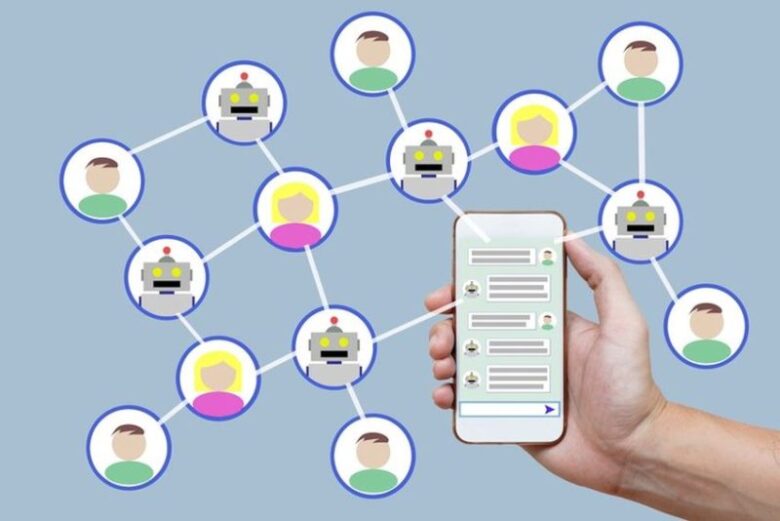They have created quite a name for themselves, in their short period of existence. People, nowadays are crediting those with things like improved customer relations, real-time customer problem solving, etc.
This has prompted many online business owners to incorporate chatbots on their websites.
But, is it that easy?
Can every chatbot manage to hit a bulls’ eye when it comes to customer satisfaction?
Let’s look at the three most crucial factors that you should deeply dive into before creating your new chatbot.
(1) Creation

The objective
What exactly do you need it for?
Is it to enhance your lead generation/ conversion?
Or is it part of your CRM program?
What value would your target customer reap out of the chatbot?
Is it real-time problem solving or personalized value provision?
You should thoroughly analyze all these aspects and finally come up with a few clear and explicit motives, before starting your chatbot creation journey.
Well whatever your motive is, hopefully, it’s not just to be a part of the digital marketing trend wagon.
Defining your Domain
The next step is to ascertain the quantity of information your chatbot would serve to your customers.
The length and breadth of the quantity of information should be decided entirely on the demographic and psycho-graphic preferences of your target consumer.
For example, a chatbot, serving a used car selling website in Australia.
As per the length, it should only provide information regarding used four-wheelers and not two-wheelers or trucks.
Secondly, as per the breadth, it should, by default provide the customers with cars that have an automatic transmission, unless
specifically asked about a manual one, as the majority of Australians prefer to drive automatic vehicles.
Writing a conversational script
The next step is to define a default script of the conversation that your chatbot is going to have with your customer.
A generic script runs like this
- Introduction
Mr tech- Hi!! I am Mr. Tech, the chatbot, your guide( for the respective website).
Customer- Hello Mr. TECH.
- Small Talk
Mr. Tech- How are you doing today?
Customer- Great.
- Main objectives
This is where it talks about the specific topics it can provide information on.
- Additional objectives
This can include certain lead generation objectives like requesting the customer to sign up for a newsletter or e-book.
- Finishers
Thanks for visiting our website today
See you soon.
Testing your bot
This involves conducting a test rollout of your chatbot before turning it live.
Test rollouts can be conducted with employees, friends, a few long term
Customers.
Gaps, if any in the chatbot operation should be noted and diagnosed.
(2) Marketing and Branding

Branding and promotion has now become a crucial part of the overall bot development strategy. For more information on the bot development, visit goodfirms.co. Following are the things you should concentrate on.
Immediate value
It’s absolutely crucial to mold your chatbot as per the demands and preferences of your target customers.
Entering into a highly generic conversation with a chatbot with no immediate value addition results in a huge turn off for your potential leads.
“Immediate Value,” yes, these two words should be at the core of your strategy.
Therefore your chatbot must always be able to clearly specify the particular benefits it can provide to the customer, right at the start of the conversation.
“If I am in conversation with a fitness website chatbot, regarding diet plans, it should immediately provide me with specific goals, for which it can suggest me some diet plans, namely for “fat loss” and “Muscle gain” goals.”
The personalization factor
Nothing appeals to a customer more than someone taking an extra step and offering them services that exclusively suit their preferences.
So how can you reap the most out of this?
Its simply by creating a chatbot interface that can analyze prior information shared by the customer during the conversation, and provide real-time solutions based on the previous information shared.
An ideal example would be…
“A fitness website chatbot suggesting me some low-intensity workout routines for fat loss, after considering the fact that I am Asthmatic, a piece of information that I had mentioned at the start of the conversation.”
How to create a brand out of your chatbot ?
Naming the bot
This is all about the “brand recall” factor.
Siri, Alexa are some prominent names that you can immediately relate to the brands that own them.
So how does this work?
A potential lead of yours would remember having a personalized chat with let’s say Mr. Tech, and will eventually start associating your company with Mr. Tech.
Another manner in which you can enhance the brand recall factor is by providing your Mr. Tech, with an animated existence.
Why do we immediately associate Google Android with this guy over here?
That’s because, over the years, Android has indirectly compelled us to develop a visual association with the Android bot and eventually the Android brand.
Social Media
Social Media, as of today, is a place where every potential lead of yours is positively present.
So why not introduce your shiny new chatbot to them.
Write a few interactive and humorous posts introducing your chatbot and inviting your leads to have a quick and exciting chat, on your website.
You can always augment these posts with trending hashtags and your own business hashtags.
All in all, introducing your new chatbot, on social media with a bang can contribute significantly to your lead generation strategy.
(3) Evaluation

Arguably the most crucial one among all the three factors.
This is where you can find out about those areas where you need to improve your chatbot’s performance, either in terms of the user interface or the content that you are currently providing.
A/B testing is currently the most popular evaluation technique for chatbots.
These are the most important metrics that you should measure, during A/B testing.
- Retention rate
This measures the number of customers who have reverted back to your chatbot after having an interaction with it for the first time.
The retention rate indicates whether a particular customer is widely satisfied with the user interface and in the manner in which your chatbot has been able to satisfy his/her queries.
(2) The Drop Off rate
The drop off rate highlights those particular points in the overall chatbot conversational flow, where the customer has dropped off or left the interaction.
This indicates that there are certain elements in the overall User interface that your user is facing some form of difficulty to navigate through, or you are providing some form of content that is not providing adequate value to the user.
Due to these, he either gets bored or frustrated and leaves the conversation in between.
(3) Main conversions rate
This indicates the number of potential leads your chatbot has been able to convert.
Conversions may include clicking on a particular CTA, completing the checkout process, signing up for a newsletter or e-book.
Conclusion
Creating a chatbot is never a problem.
The challenge is to maintain its existence and effectiveness in the long run.
Diligently adopting the above measures would help you in achieving this feat with lower setbacks.


